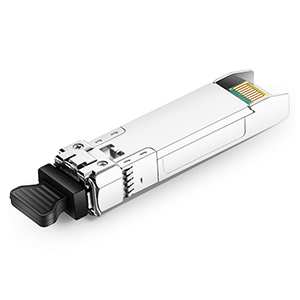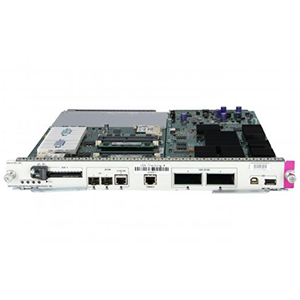DWDM (Dense Wavelength Division Multiplexing) technology plays an important role in high-speed optical networks. This article will compare the differences between passive DWDM and active DWDM architectures. We will first explain the basic working principle of DWDM and explain its advantages in optical fiber transmission. Next, we will define the basic architecture of passive DWDM and explain its main features, advantages and disadvantages.
Then, we will define the basic architecture of active DWDM and explain its main features, advantages and disadvantages. Finally, we will focus on comparing the differences between passive DWDM and active DWDM in terms of network architecture, optical path management, cost and energy consumption, bandwidth and transmission distance, as well as deployment and maintenance, and explain the impact of these differences on application scenarios.
Overview of DWDM Technology
Basic Working Principle of DWDM:
DWDM (Dense Wavelength Division Multiplexing) is an advanced optical transmission technology. Its basic working principle is as follows:
(1) At the transmitting end, multiple optical signal wavelengths are combined and transmitted on the same optical fiber.
(2) After passing through the optical division multiplexer (MUX), the optical signal is synthesized into a beam of broadband light.
(3) This beam of broadband light is transmitted along the same optical fiber, utilizing the large bandwidth characteristics of the optical fiber.
(4) At the receiving end, the optical signal is separated into multiple optical signals of different wavelengths by the optical separator (DEMUX).
(5) Each optical signal is then demultiplexed into an independent electrical signal output after undergoing optoelectronic conversion.
This makes it possible to transmit multiple optical signals that do not interfere with each other on the same optical fiber, greatly improving the total bandwidth of optical fiber transmission.
Advantages of DWDM technology in optical fiber transmission:
(1) Bandwidth expansion:
- DWDM can transmit up to 80-100 optical signals on a single optical fiber.
- It greatly expands the transmission bandwidth of a single optical fiber and meets the growing network needs.
(2) Extended transmission distance:
- DWDM system uses optical amplifiers to achieve long-distance non-relay transmission.
- It reduces the cost of network deployment and is suitable for long-distance network interconnection.
(3) High spectrum utilization:
- DWDM uses dense wavelength spacing (50/100GHz) to effectively utilize the spectrum resources of optical fiber.
- Supports more business carrying and improves the utilization efficiency of network resources.
(4) Strong flexibility:
- DWDM has a high degree of modularity and scalability, and can be dynamically adjusted according to actual needs.
- It is convenient for the gradual expansion of network capacity to meet the needs of different business development stages.
(5) High reliability:
- DWDM system adopts multi-channel redundant transmission to ensure high availability of services.
- Key equipment such as optical amplifiers also provide hot backup functions, which greatly improves the reliability of the network.
In summary, DWDM technology has become a key technology in the current optical fiber transmission network with its excellent bandwidth expansion capability, long-distance transmission advantages, and high spectrum utilization. It has greatly improved the carrying capacity and reliability of optical fiber networks.
Passive DWDM (Passive DWDM)
Basic architecture of passive DWDM:
Passive DWDM is a typical application of DWDM technology. Its basic architecture includes:
(1) Optical division multiplexer (Multiplexer/Demultiplexer): responsible for combining or separating multiple optical signals.
(2) Optical fiber transmission network: transmits the multiplexed broadband optical signals.
(3) Optical attenuator: used to adjust the optical power and balance the optical power of multiple signals.
(4) Optical connector: provides input and output interfaces for optical signals.
This architecture does not involve any active devices that require external power supply. It is composed entirely of passive optical devices, so it is called “passive DWDM”.
Main features of passive DWDM:
(1) No external power supply required:
- Passive DWDM equipment is composed entirely of passive optical components and does not require any external power supply.
- This greatly simplifies the deployment and maintenance of equipment and reduces operating costs.
(2) No active optoelectronic conversion equipment:
- The passive DWDM system only multiplexes/demultiplexes optical signals and does not have optoelectronic conversion equipment.
- The signal quality loss introduced by optoelectronic conversion is avoided, and the transmission reliability is improved.
(3) Simple optical path management:
- The passive DWDM system does not require complex optical path management and control, and is simple and convenient to operate and maintain.
- Only regular checks of fiber connections and power levels are required, which greatly reduces network management overhead.
Advantages and Disadvantages of Passive DWDM:
Advantages:
- Low cost: No active equipment is required, and the system cost is low.
- Simple deployment: No power supply and control system are required, and deployment and maintenance are extremely simple.
- High reliability: No electronic equipment, free from power failure, software bugs, etc.
Disadvantages:
- Limited bandwidth: The bandwidth of each channel is usually below 10Gbps.
- Short transmission distance: Generally less than 80km, relay amplification is required to achieve long distances.
- Limited power margin: Precise optical power management is required, and it is sensitive to fiber loss.
In general, passive DWDM is very suitable for medium- and short-distance optical transmission applications such as metropolitan area networks and campus networks due to its advantages such as low cost, simple deployment, and high reliability. However, its bandwidth and transmission distance are relatively limited, and it needs to be selected in combination with the actual application scenario.
Active DWDM
Basic architecture of active DWDM:
Active DWDM is another typical application of DWDM technology. Its basic architecture includes:
(1) Optical transmitter module (Transponder): Converts electrical signals into optical signals of different wavelengths.
(2) Optical multiplexer (Multiplexer/Demultiplexer): Responsible for merging or separating multiple optical signals.
(3) Optical amplifier (Optical Amplifier): Amplifies the optical signal that is attenuated during transmission.
(4) Optical Path Management Device (ROADM): can dynamically adjust and manage the transmission path of optical signals.
(5) Optical Fiber Transmission Network: responsible for long-distance transmission of multiplexed broadband optical signals.
Active DWDM systems require external power supply and include various types of active optoelectronic conversion and management equipment.
Main features of active DWDM:
(1) External power supply required:
- Active DWDM systems include a variety of active optoelectronic devices that require external power supply.
- This increases the deployment and operation costs of the system and places higher demands on power supply.
(2) Active optoelectronic conversion equipment included:
- Active DWDM systems use optical transmitter modules to achieve optoelectronic conversion and use optical amplifiers for signal amplification.
- The introduction of these devices improves the transmission performance of the system, but also increases the complexity of the system.
(3) Programmable optical path management:
- The active DWDM system is equipped with intelligent optical path management devices such as ROADM, which can dynamically adjust the transmission path.
- This programmable optical path management greatly improves the flexibility and scalability of the system.
Advantages and Disadvantages of Active DWDM:
Advantages:
- Large bandwidth: A single optical fiber can carry 80-100 high-speed optical channels.
- Long transmission distance: Optical amplifiers can achieve long-distance transmission without relays.
- Strong flexibility: ROADM and other devices can dynamically adjust the optical path, facilitating network expansion.
Disadvantages:
- High cost: It contains a variety of active optoelectronic devices, and the system cost is relatively high.
- High power consumption: Various active devices require a large amount of power supply, and the energy consumption is relatively high.
- Complex deployment: It requires detailed optical path planning and equipment debugging, and the deployment is troublesome.
In general, active DWDM is suitable for large-capacity and long-distance optical transmission applications such as trunk networks and metropolitan area networks due to its excellent bandwidth performance and long-distance transmission capabilities. However, its high cost and complex deployment also make it less used in small and medium-sized networks.
Comparison of the differences between passive DWDM and active DWDM
The main difference between passive DWDM (dense wavelength division multiplexing) and active DWDM lies in the signal processing method. Passive DWDM uses passive optical devices for signal separation and merging, which is low-cost, but lacks signal amplification and regulation functions; active DWDM uses active devices for signal amplification, regulation and management, supports longer transmission distances and higher signal quality, and is suitable for large-scale, high-performance networks.
Network architecture:
- Passive DWDM uses a relatively simple passive optical device architecture, and the network topology is relatively fixed.
- Active DWDM contains a variety of active optoelectronic devices, which can achieve more flexible network topology design.
- Different network architectures determine that the two are suitable for transmission application scenarios of different scales and types.
Optical path management:
- Passive DWDM does not require complex optical path management, only basic optical power management.
- Active DWDM is equipped with intelligent management devices such as ROADM, which can achieve dynamic optical path adjustment and optimization.
- Flexible optical path management helps active DWDM adapt to complex network expansion needs.
Cost and energy consumption:
- Passive DWDM is composed entirely of passive optical devices, with low equipment and operating costs and low energy consumption.
- Active DWDM contains a variety of active devices, and the system cost and energy consumption are significantly higher.
- Lower cost and energy consumption are one of the important advantages of passive DWDM.
Bandwidth and transmission distance:
- The single-channel bandwidth of passive DWDM is usually below 10Gbps, and the transmission distance is limited.
- Active DWDM can achieve 80-100 optical channels up to 100Gbps, and supports long-distance non-relay transmission.
- The ultra-high bandwidth and long-distance transmission capabilities of active DWDM provide strong support for large-capacity transmission applications.
Deployment and maintenance:
- Passive DWDM deployment and maintenance are extremely simple, and no professional participation is required.
- Active DWDM requires complex optical path planning and debugging, and requires high professionalism of maintenance personnel.
- The simple and easy-to-use characteristics make passive DWDM more suitable for small and medium-sized networks with limited resources.
In short, passive DWDM and active DWDM have their own advantages and disadvantages, and it is necessary to choose the appropriate technical solution according to different application scenarios and demand characteristics. Passive DWDM is suitable for medium- and short-distance, low-cost optical transmission applications, while active DWDM is more suitable for large-capacity, long-distance core transmission applications.
Summary
DWDM technology plays a key role in high-speed optical networks, and choosing the right DWDM architecture is crucial. Our company has long focused on the research and development and application of DWDM technology and has rich practical experience. We provide various high-performance passive DWDM and active DWDM equipment, which can be widely used in backbone networks, metropolitan area networks and other fields.
Our DWDM products use industry-leading technology and have achieved excellent levels in transmission performance, energy efficiency, and management functions. At the same time, our team of engineers will provide you with professional demand analysis and solution planning services to ensure that the selected DWDM architecture can meet your actual needs to the greatest extent. Contact us now to learn more. We will do our best to provide you with the best products and solutions.
Passive DWDM vs Active DWDM FAQ
Passive DWDM refers to a Dense Wavelength Division Multiplexing system that uses passive optical components, such as filters and multiplexers, to combine and separate different wavelengths of light without the need for external power or active electronics.
Active DWDM involves the use of active electronic components, such as amplifiers, transceivers, and signal processors, to manage and enhance the signals transmitted over multiple wavelengths in a fiber-optic network.
Passive DWDM systems are simpler to deploy as they do not require power or complex electronics, making them ideal for short to medium distances. Active DWDM systems are more complex, requiring power and cooling but can support longer distances and higher performance.
Passive DWDM is generally more cost-effective due to the absence of active components and lower maintenance requirements. Active DWDM, while more expensive, provides greater flexibility and performance, especially for long-haul networks.
Active DWDM is better suited for long-distance transmission as it includes amplifiers and other active components that boost signal strength, allowing data to travel over greater distances without degradation.
Passive DWDM requires no external power, relying solely on passive optical components. Active DWDM, on the other hand, requires power to operate its active components like amplifiers and transceivers.
Yes, Passive and Active DWDM systems can be integrated within the same network to optimize cost and performance. For example, Passive DWDM might be used in short-distance links, while Active DWDM is deployed for long-distance or high-capacity segments.
Passive DWDM requires minimal maintenance due to the lack of active components. Active DWDM requires regular maintenance to ensure the proper functioning of its electronic components and to manage power and cooling needs.
Signal quality in Passive DWDM can degrade over long distances due to the lack of amplification. Active DWDM maintains higher signal quality over long distances by using amplifiers and other active components to boost and clean the signal.
Active DWDM is generally more scalable, as it allows for easier addition of channels and greater control over signal management. Passive DWDM is less scalable, particularly in long-distance or high-capacity scenarios where signal degradation can be a limitation.




